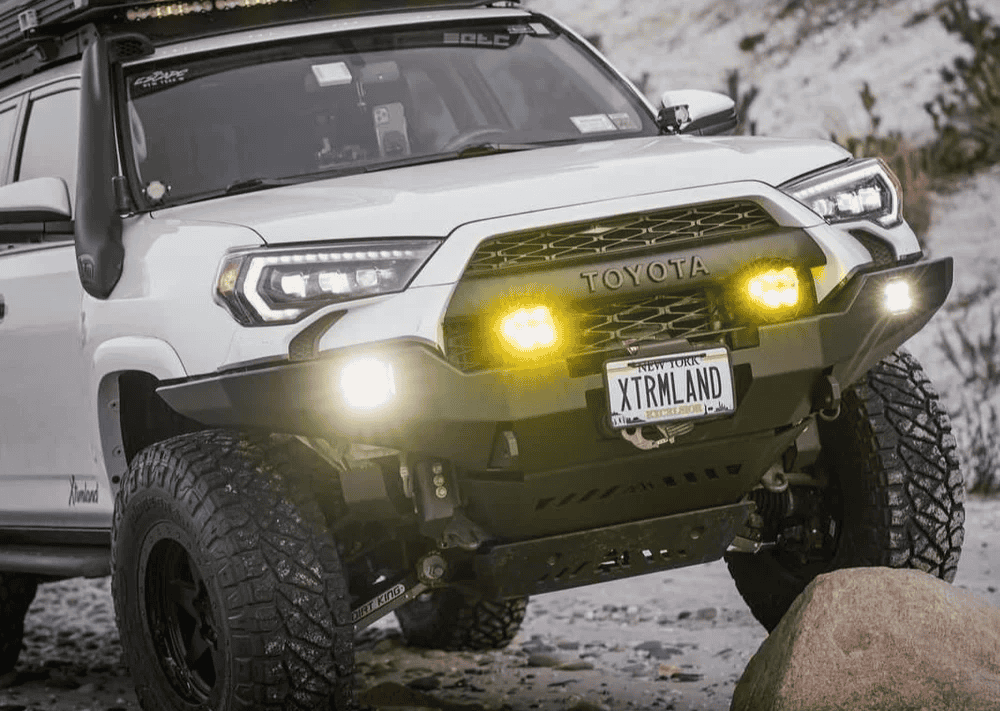Overland Vehicles

Modern accessories are hungry for clean power. Lights, fridges, fans, compressors, and comms gear deserve their own fused circuits rather than tapping into factory wiring. An auxiliary fuse panel gives you a central, organized hub that protects each device, simplifies troubleshooting, and prevents overloads on sensitive OEM circuits.
Treat the panel as a distribution brain. You will run a protected feed from the battery or house battery to the panel, then branch out to each accessory. The result is predictable performance, less electrical noise, and a cleaner path for service down the road.
Begin at the source. Place a main fuse or resettable breaker as close to the battery as physically practical, sized for the panel’s maximum expected load and the ampacity of the feed cable. This upstream protection guards the entire run against shorts. Many builders favor MAXI or MIDI fuses for compact, high current protection.
If your rig has a dual battery or house battery, feed the panel from that battery through a battery isolator or DC to DC charger. This keeps starting power safe while your accessories draw from the auxiliary bank.
Some devices need constant power, others should wake with ignition. Split the panel into two buses when possible. A relay triggered by an ignition source can energize the switched side, keeping lights or chargers from running when the vehicle is off. Use a low current trigger for the relay coil and ensure the relay current rating exceeds the total switched load.
A stable ground is vital. Use a ground bus or return to battery negative rather than relying on random chassis points. In steel bodied vehicles, star style grounding reduces noise for radios and sensitive electronics. In aluminum or composite structures, a dedicated ground return is often mandatory.
Successful auxiliary fuse panel wiring lives or dies by math and method. Plan first, then install with discipline.
Select cable size based on continuous current and round trip length. For many 12 volt accessories, aim for less than three percent voltage drop. Fridges and fans run happier on 12 to 13 volts than on a sagging supply. Use tinned copper, fine strand marine grade wire where possible; it resists corrosion and handles vibration well.
Crimp with the proper die and verify with a firm pull test. Use adhesive lined heat shrink for strain relief and moisture resistance. Protect runs in split loom or braided sleeving, secure every few inches, and add edge protection where wire passes through metal. Grommets, P clamps, and thoughtful routing prevent chafe and future gremlins.
Fuse each branch to protect the wire, not the device. A 10 amp load on a small gauge circuit might need a smaller fuse than the device’s rating suggests. Label both ends of every run and keep a printed or digital schematic in the glove box. When a light flickers on a rainy night, labeled circuits turn a mystery into a five minute fix.
Safety is baked in, not bolted on at the end. Disconnect the battery while working, cap live ends, and keep metal tools clear of terminals. Route away from sharp edges, heat sources, and moving parts. Avoid parallel runs with high noise sources like ignition coils or high power alternator leads when possible.
Before powering up, meter continuity to ground and across the main feed with fuses removed. After energizing, check voltage at the panel and at the far end of the longest circuit under load. Record baseline readings so you have reference numbers for future diagnostics. Leave spare capacity on the panel and in the feed line for growth; the accessory list rarely gets shorter.
An auxiliary fuse panel is also a policy against surprises. By isolating accessories from OEM networks and CAN controlled modules, you minimize the risk of backfeeding or odd electronic behavior. Use ignition triggers and relays to control when devices wake, and you will keep parasitic draw in check during storage.
The cleanest installs look planned because they are. Even simple systems benefit from a one line diagram, a load table, and a physical layout sketch. That little bit of design work pays off every time you add a device or chase a fault.
For overland and van platforms, smart charging is part of the equation. If your panel feeds from a house battery, pair it with appropriate charge sources like alternator friendly DC to DC units, solar controllers, or shore power chargers. Proper charging ensures your panel delivers stable voltage and your gear stays happy.
OZK Customs builds auxiliary power systems that are quiet, serviceable, and sized for real world travel. If your rig needs a tidy panel, switched and constant buses, and rock solid grounding, our team designs and installs to the same standard we use on expedition grade builds. See how we outfit trail ready platforms on our overland rigs page, explore options on our custom overland upfit page, and learn more about our approach on why choose OZK Customs.
Tell us what you run now and what you plan to add. We will spec the feed, fusing, wire gauges, charging path, and labeling so your accessories behave like factory equipment and your adventures stay focused on the road ahead.
Ready for clean, reliable power without the headaches? Our team designs and installs complete auxiliary power systems that match your accessories, charging profile, and travel style. Tell us about your rig, and we will engineer a fused, labeled, and serviceable setup that just works. Request your build consult today.
ADDRESS:
6159 E Huntsville Rd, Fayetteville, AR 72701
PHONE:
(479) 326-9200
EMAIL:
info@ozkvans.com